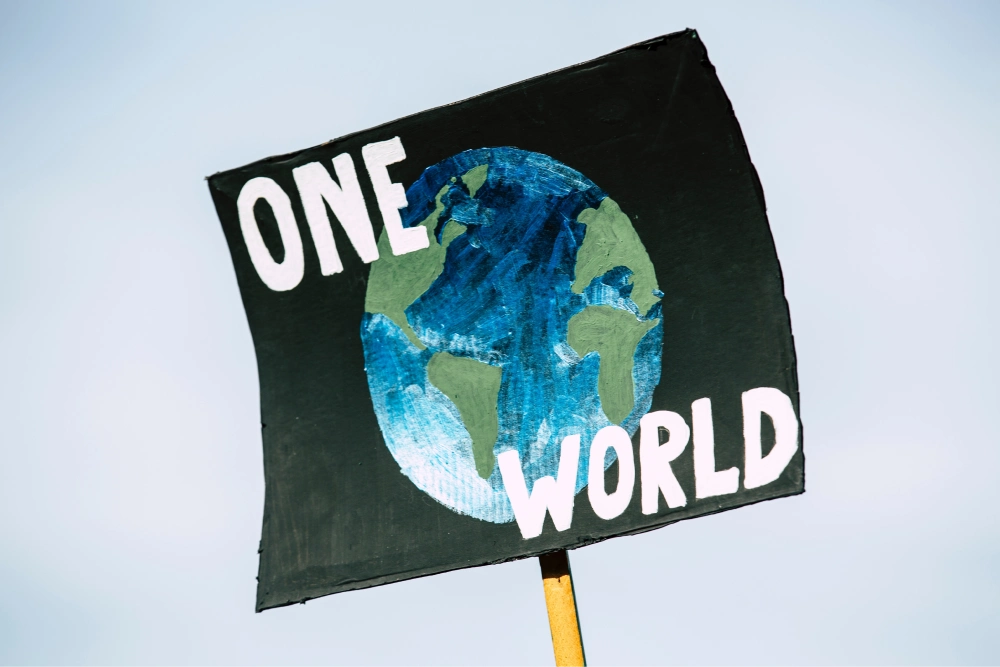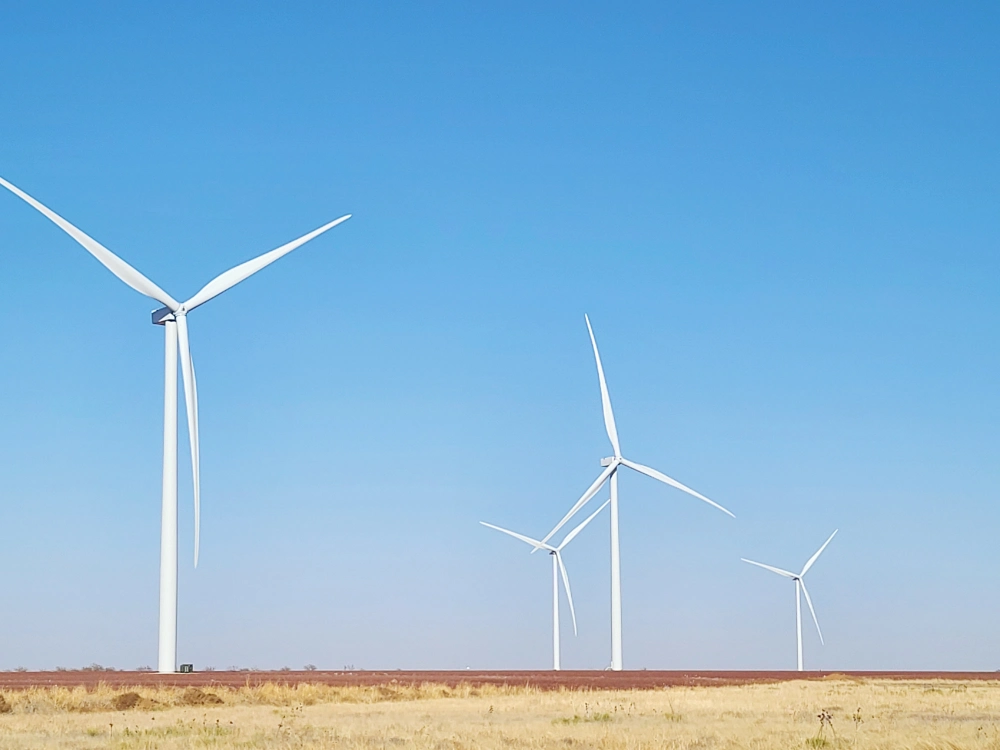What Is Carbon Capture and Storage?
5 minute readHave you ever wondered how humanity can reduce our global environmental footprint while reliably producing enough energy to meet the
Home > Learning Center > Sustainability > What Is the Paris Climate Agreement? Updates on Progress (2023)
8 minute read • Last update January 2024

Adopted in 2015, the Paris Agreement, also known as the Paris Climate Accords, is a pivotal international treaty adopted by 195 countries aimed at curbing the devastating effects of global climate change. The treaty was created to address the mitigation of climate change, as well as the adaptation and finance required to mitigate climate change.
Adopted on December 12, 2015, at the United Nations Climate Change Conference (COP21) in Paris, France, the Paris Agreement is a legally binding international treaty that unites 195 parties to combat climate change. Built on the foundation of the United Nations Framework Convention on Climate Change (UNFCCC) and the Kyoto Protocol, the goal of the agreement is to reduce global greenhouse gas emissions and address climate change. The primary objective is to restrict the global average temperature well below 2°C above pre-industrial levels and pursue efforts to limit the temperature increase to 1.5°C, thus mitigating climate impacts.
The Paris Agreement comprises:
This dynamic framework mobilizes resources and expedites efforts to combat climate change.
The Paris Agreement’s roots can be traced back to the United Nations Framework Convention on Climate Change (UNFCCC), established in 1992 as the main international agreement on climate action. Adopted in 1997, the Kyoto Protocol marked another milestone by setting binding emissions reduction targets exclusively for developed countries. However, its efficacy was limited due to the non-participation of major emitters like the United States, China, and India.
During COP 17 in Durban, South Africa, a turning point was reached when delegates agreed to formulate a comprehensive climate treaty by 2015, mandating all major emitters to reduce their global carbon emissions and greenhouse gas emissions. This paved the way for the Paris Agreement, which was opened for signature on April 22, 2016, and entered into force on November 4, 2016, after being ratified by world leaders from various countries.
The Paris Agreement pursues three objectives: limiting global temperature rise, enhancing climate resilience, and mobilizing financial support for developing countries. This goal strives to keep the global average temperature well below 2°C above pre-industrial levels. Additionally, it seeks to limit the increase to 1.5°C since this would significantly reduce climate risks and impacts..
Another critical aspect of the agreement is its enhanced transparency framework, which establishes harmonized monitoring, reporting, and verification (MRV) requirements to ensure compliance. This framework, along with provisions for capacity-building and recognition of ‘loss and damage’ due to climate change, aims to create a robust response to the global climate crisis.

Key components such as NDCs, the Global Stocktake, and financial support mechanisms form the structure of the Paris Agreement. Together, these elements ensure transparency, accountability, and progress towards achieving the agreement’s ambitious goals.
Serving as the backbone of the Paris Agreement, NDCs allow each country to voluntarily set climate goals to reduce emissions and build resilience. These commitments are expected to become more ambitious over time, reflecting the principle of ‘progression’ enshrined in the agreement.
NDCs allow countries to tailor their climate actions to their unique contexts while fostering international cooperation and the exchange of best practices. This bottom-up approach encourages countries to take ownership of their climate commitments and work collaboratively towards the shared objectives of the Paris Agreement.
A vital component of the Paris Agreement, the Global Stocktake provides a periodic evaluation of progress towards its objectives. The first assessment is scheduled for the end 2023 during COP 28, with subsequent evaluations every five years.
The Global Stocktake not only assesses mitigation efforts but also evaluates adaptation, climate finance provisions, and technology development and transfer.
This comprehensive assessment process is crucial for ensuring that countries are held accountable for their climate commitments and for identifying areas where additional efforts are needed. By maintaining transparency and fostering collaboration, the Global Stocktake helps to build trust and confidence among countries as they work together to tackle climate change.
By mobilizing resources for climate change mitigation and adaptation in developing nations, financial support mechanisms play a critical role in the Paris Agreement. These mechanisms seek to strike a balance between adaptation and climate mitigation efforts, with a particular focus on increasing support for countries most vulnerable to the effects of climate change, such as Least Developed Countries and Small Island Developing States.
Climate finance is essential for making large-scale investments to reduce emissions and provide financial resources to adapt to the adverse effects of a changing climate. The Paris Agreement emphasizes the importance of public grants for adaptation measures and encourages developed countries to contribute to these efforts.

The varying levels of commitment to the Paris Agreement by major players such as the United States and the European Union have impacted its overall effectiveness. Their actions and decisions have significant consequences on the global climate landscape and the progress towards achieving the agreement’s goals.
Under President Trump’s administration in June 2017, the United States announced its intent to withdraw from the Paris Agreement, culminating in the official withdrawal on November 4, 2020. This withdrawal dealt a blow to the international climate movement and raised questions about the future of global climate action.
However, on January 20, 2021, President Joe Biden signed an executive order to rejoin the Paris Agreement, signaling a renewed commitment to climate action. The United States officially re-entered the agreement on February 19, 2021, restoring its role as a significant player in the global climate solution.
As a staunch supporter of the Paris Agreement, the European Union (EU) has committed to ambitious climate goals and taken a proactive role in global climate action. The EU has pledged to become the first climate-neutral economy by 2050 and has set a target to reduce its greenhouse gas emissions by at least 55% by 2030 compared to 1990 levels.
The EU’s dedication to the Paris Agreement has made it a global leader in climate action and serves as an inspiration for other countries to follow suit. Its commitment to reducing emissions and promoting sustainable practices has not only helped drive progress towards the agreement’s goals but has also stimulated low-carbon solutions and new markets.
Undeniably, the Paris Agreement has made progress in addressing climate change and reducing greenhouse gas emissions. However, it has also faced challenges and criticisms regarding its overall effectiveness, pace, and the need for enhanced commitments from participating countries.
The Paris Agreement has led to:
Over 190 countries have ratified the agreement, the Green Climate Fund has been established, and Nationally Determined Contributions (NDCs) have been implemented, showcasing the progress made towards combating climate change.
These successes demonstrate that the Paris Agreement is making a difference in the global fight against climate change. However, more work remains to be done to ensure the long-term success of these efforts and to address the ongoing challenges faced by countries around the world.
Criticism of the Paris Agreement includes:
To overcome these challenges, countries must enhance their NDCs, accelerate mitigation efforts, and work collaboratively to achieve the Paris Agreement’s objectives. International cooperation, technological advancements, and financial support mechanisms will be essential in addressing these criticisms and ensuring the success of global climate action.

The future of global climate action depends on the ability of countries to strengthen their national commitments, foster innovations, and advance technology to meet the Paris Agreement’s goals. As our understanding of the impacts of climate change grows, so must our collective determination to address this global crisis.
In order to achieve the Paris Agreement’s objectives and limit global temperature rise, countries must work together to enhance their NDCs and collaborate on best practices for climate action. By sharing knowledge, providing financial and technical assistance, and promoting international cooperation, countries can collectively work towards a more sustainable future.
As the world continues to grapple with the impacts of climate change, the need for strengthened national commitments has never been more urgent. The success of the Paris Agreement hinges on the ability of countries to come together and take bold, decisive action in the face of an unprecedented global challenge.
The success of global climate action, including addressing global warming, and the achievement of the Paris Agreement’s goals will heavily depend on technological advancements and innovations. From renewable energy sources like solar and wind power to carbon capture and climate adaptation technologies, these innovations have the potential to transform the way we address climate change.
As we move forward, it is essential that countries invest in research and development, foster collaboration, and support the growth of innovative technologies to tackle the ever-evolving challenges of climate change. By embracing technological advancements, we can unlock new opportunities for progress and build a more sustainable future for all.
The Paris Climate Agreement represents a historic milestone in the global fight against climate change. With its ambitious goals, key components, and the involvement of major players, it has made significant progress in addressing this pressing issue. However, challenges and criticisms remain, highlighting the need for strengthened national commitments, international cooperation, and technological advancements. As we look to the future of global climate action, it is vital that we harness the power of innovation, collaboration, and determination to overcome these challenges and safeguard our planet for generations to come.
The Paris Climate Agreement is an international treaty aimed at keeping global temperatures from rising more than 2 degrees Celsius above pre-industrial levels. It requires countries to reduce greenhouse gas emissions and commit to a “nationally determined contribution”, with the target date being 2030 for most. The agreement also aims to strengthen countries’ ability to deal with the impacts of climate change.
Yes, the United States is in the Paris Climate Agreement. On January 20, 2021, President Biden signed the instrument to bring the United States back into the agreement and, as of February 19, 2021, the United States officially rejoined the landmark Agreement.
Recent studies have found that the countries that have agreed to the Paris Accords are well-behind the goals they agreed to back in 2015. More than agreement is needed to meet these ambitious goals of limiting global warming.
Iran, Libya, Yemen and Eritrea have not ratified the Paris Agreement. All other members of the Organization of Petroleum Exporting Countries (Opec) have formally endorsed the agreement, along with 193 of 197 nations and all G20 countries. This shows that the majority of the world is committed to the Paris Agreement and its goals of reducing global emissions and mitigating the effects of climate change.
Graham Lumley, Digital Marketing Manager at BKV Energy, leads digital and traditional marketing strategies, focusing on educating Texans about the state's deregulated energy market. With over 8 years of marketing experience, he creates content to help consumers understand and save on their energy bills, bringing a fresh and dynamic approach to the industry.

Have you ever wondered how humanity can reduce our global environmental footprint while reliably producing enough energy to meet the

How much wind energy does Texas produce? There are over 16,000 wind turbines in Texas capable of producing over 39,000
Get $50 off your electric bill!
Use code BKVEJOINUS50
Enter your zip code to shop BKV Energy's affordable, fixed-rate Texas electricity plans. Use the promo code for $50 off your electric bill.